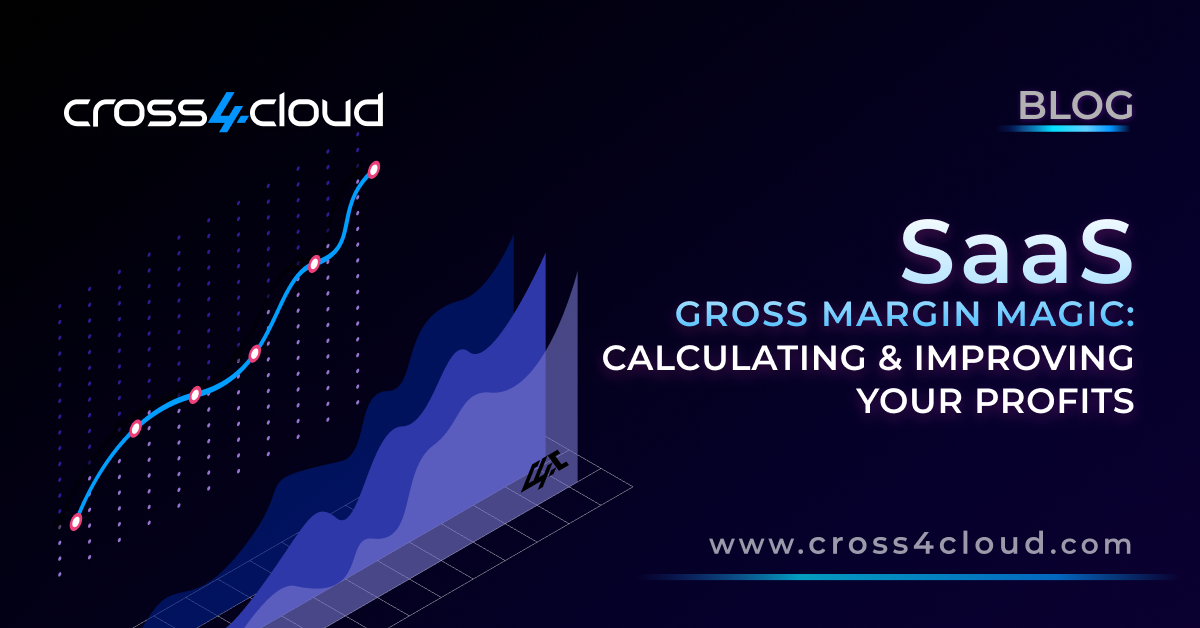Mastering SaaS Gross Margin: Strategies for Maximizing Profitability
Unlock the secrets to enhancing your SaaS company's gross margin with our comprehensive guide. Learn how to calculate, analyze, and improve your profits with strategic insights and practical tips. Discover how tools like Cross4Cloud can revolutionize your financial operations for better sustainability and growth.
Introduction
Navigating the financial complexities of a SaaS (Software as a Service) business can be as intricate as orchestrating a symphony—every element needs to be in perfect harmony to ensure success. One crucial financial metric that SaaS companies must master is the gross margin. This figure not only measures profitability but also provides deep insights into the efficiency and scalability of your business model. In this blog post, we will demystify the calculation of SaaS gross margins and explore strategic ways to enhance them, ensuring that your business not only survives but thrives in the competitive tech landscape.
The Importance of SaaS Gross Margin in Business Sustainability
Gross margin is a critical indicator of a company's financial health and operational efficiency. For SaaS companies, where recurring revenue models are the norm, having a robust gross margin is essential for long-term sustainability. Here’s why:
Resource Allocation: High gross margins indicate that a company can spend more on marketing, sales, and product development while still maintaining profitability.
Investor Appeal: Investors scrutinize gross margins closely, as they reflect the potential for growth and profitability. A strong gross margin makes a business a more attractive investment.
Pricing Power: A healthy gross margin suggests that a company has pricing power and cost control, which are vital in a competitive industry.
Scalability Indicator: For SaaS businesses, scalability is key. A good gross margin implies that the business can scale without proportionally increasing costs.
Step-by-Step Formula for Calculating Your SaaS Gross Margin
Calculating the gross margin for a SaaS company involves several steps. Here’s how you can accurately compute this key metric:
Determine Your Revenue:
Start with your total revenue for a specific period. This includes all income from subscriptions, one-time payments, and any other revenue streams.
Identify Cost of Goods Sold (COGS):
For SaaS companies, COGS includes the costs directly related to delivering the service. This typically involves:
Server costs
Third-party service fees (e.g., payment gateways)
Support and success team expenses
Software licenses used in service delivery
Calculate Gross Margin:
Use the formula:

Gross Margin = (Total Revenue- COGSTotal Revenue) 100
This will give you the gross margin percentage, which indicates the portion of each dollar of revenue that is profit before accounting for more indirect business costs.
Strategies to Improve Gross Margins Without Sacrificating Quality
Improving your SaaS company's gross margin is achievable by adopting strategies that enhance efficiency and reduce costs without compromising the quality of your service:
Optimize Cloud Infrastructure:
Regularly review and optimize your cloud infrastructure for performance and cost efficiency. Consider auto-scaling features to reduce wastage and negotiate better rates with providers as your usage grows.
Automate Support Services:
Invest in AI-driven tools to handle routine customer inquiries and support tasks. This reduces the labor costs associated with your support team and can improve response times and customer satisfaction.
Reduce Churn with Better Engagement:
Implementing effective onboarding processes and continuous customer engagement strategies can reduce churn rates, thereby increasing the lifetime value of each customer and improving your overall margins.
Streamline Operations:
Identify areas in your operations where processes can be streamlined or where automation can be introduced to reduce costs. This might include automating certain aspects of customer onboarding or employing more efficient coding practices.
Reevaluate Vendor Contracts:
Regularly assess and renegotiate contracts with software vendors and other third-party services to ensure you are getting the best rates and terms.
Increase Prices Strategically:
If your value proposition is strong, consider a strategic increase in pricing to reflect the quality and added benefits of your service. This should be done thoughtfully to avoid alienating existing customers.
Conclusion
Mastering the gross margin within a SaaS framework is crucial, not just for day-to-day profitability but as a cornerstone for strategic growth and long-term sustainability. As the digital landscape becomes increasingly competitive, optimizing every aspect of your financial operations becomes essential. Integrating tools like Cross4Cloud can play a pivotal role in this optimization. Cross4Cloud offers robust analytics and management features that help SaaS companies streamline operations, manage costs, and enhance service delivery—all of which directly contribute to improving your gross margin.
Ready to unlock the full potential of your SaaS business? Explore how Cross4Cloud can transform your approach to multicloud management and gross margin optimization. Visit our website or contact us to learn more about our solutions that cater specifically to enhancing SaaS profitability. Take the first step towards transforming your financial strategy into a competitive advantage today. Contact Us!
Tags
Related Posts by Cloud Technologies
It's a fast world, never miss out anything about C4C
Subscribe to our newsletter to stay updated about C4C. New releases, features, guides and more...
